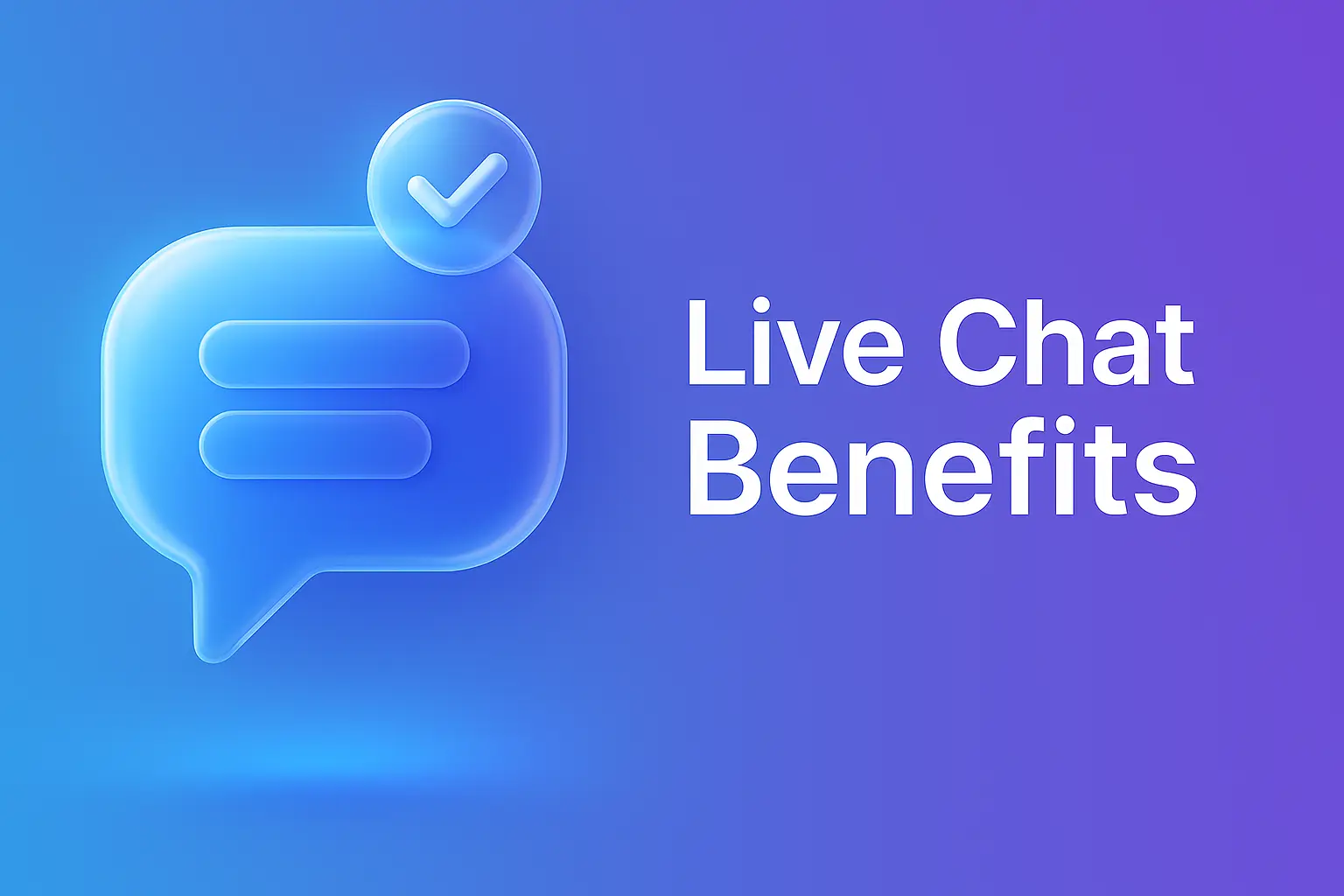11 Tips For Improving Your Live Chat Etiquette
- February 3, 2015
- 12 mins read
- Listen

Simply having a live chat feature on your website won’t help much if you don’t know how to converse with customers well. Live chat etiquette helps ensure conversations between customers and businesses stay relevant and effective.
Adhering to proper live chat etiquette means maintaining the code of conversations. It also means communicating with customers the way it should be. This is the only way to deliver exceptional customer service.
This blog will explore the etiquette live chat agents should use when engaging and interacting with their customers.
What is Live Chat Etiquette?
Live chat etiquette is a set of good practices for ensuring effective and professional communication. It’s a code of guidelines for chat agents to keep conversations respectful, relevant, and customer-centric.
Chat etiquette plays a key role in keeping the tone positive and resolving issues competently. Following the chat etiquette builds trust and increases customer satisfaction, ensuring an increased overall experience for customers.
Why is Chat Etiquette Important?
Customers today are very demanding. They expect quality interactions with agents. They want to feel valued, heard, and respected when engaging with a business. 90% of respondents say customer service is key to their loyalty to a brand.
Live chat support etiquette has a big role to play in defining the quality of customer interactions.
- Chat etiquette reflects the value and professionalism of a brand.
- The way a business communicates with customers builds the perception of its brand.
- Chat etiquette enhances the efficiency of communication.
- It makes customer engagement courteous, resulting in higher levels of customer satisfaction.
- Customers trust you when you show desired chat etiquette to them. This trust leads to loyalty.
Top Live Chat Etiquette Tips to Improve Your Customer Service
Customers feel happy when they have a great service experience. They feel bad when responses are not fast, relevant, clear, or professional. Therefore, it’s important to understand and follow chat etiquette and deliver an excellent live chat support experience.
Let us discuss the popular chat etiquette for customer service that agents can follow and enhance the experience –
1. Start your chat with friendly welcome greetings
Welcome greetings are among the most effective ways to engage and convert website visitors. A well-timed greeting message can be a great way to welcome your customers and deliver a better experience. The use of welcome messages can motivate customers to open up conversations. When agents use welcome greetings, customers feel valued and loved, and this can drive the conversation further.
To make the most out of welcome greetings, you can consider these things –
- If possible, address the customer by his/her name. For example, rather than saying “Welcome to our website or company,” you can say, “Hello (Customer’s Name), great to see you at (Business Name).
- Use the browsing history data, if available, to make the greetings feel more genuine. For example, you can say, “Welcome back, (customer name), need more clarity on pricing?” etc.
2. Understand the customer’s problem in detail
Listening attentively to the customers should be the most important chat etiquette at work. One main reason why businesses receive a large number of customer complaints is just that agents do not “listen” to them.
If you don’t listen well, how can you understand customer problems in the first place? This might lead to poor customer service. 88% of customers consider good customer service a key factor to make them buy again from a company.
Listening to them helps determine what your customers want, what their opinions and feedback are, etc. The information collected can be passed to the teams across respective business teams to implement it.
Understanding customer’s problems in detail means –
- Pay full attention to what the customer is saying
- Acknowledge the message
- Try to ask for more details if something is not clear
- Avoid interrupting the customer and let them finish before saying something
3. Prioritize reducing the response time
During peak hours, many businesses struggle to deliver real-time responses that are the main reason why customers often leave. When customers reach out to you, they expect faster solutions and not getting swift responses may leave them frustrated.
Working to reduce the response time is a key live chat etiquette as it helps you deliver a better experience. To reduce response time, you can consider routing conversations to the right team. When chats are directed to the right department, the agents can promptly identify the matter and provide effective solutions much faster.
Similarly, you should have sufficient resources onboard to manage customer conversations effectively. It helps in improving the key business metric First Response Time (FRT) and maintains the service quality.
You can also consider automating your customer support with bots to answer information-based queries in real-time. Bots are 24×7 available to engage customers and deliver instant replies. Taking steps to reduce response time is also a good chatting etiquette you should follow.
4. Maintain a positive tone and spirit throughout the chat
Customer support agents should frame the conversation positively. While handling chats, agents should also be cheerful and polite as it is not only about resolving a query but also about the right way to do that.
The focus should be on approaching the conversation with a positive frame of mind and tone so that customers stay upbeat. When agents set a positive tone, customers will be more comfortable opening up, which can help build strong relationships.
Setting a positive tone means saying things in a way that customers like rather than being negative. For example, customers may like when you say these words, “Please don’t hesitate”,
“Please note that”, “Let me check this for you, one moment, please” rather than these words, “go to our website and find out” or something similar. These are some good examples of chat etiquette you can follow.
5. Keep your conversation to the topic
At times, there might be some general chit-chat with customers, which is fine. However, going out of topic often is not a good practice. Make sure you always keep the conversation to the topic as not every customer is interested in things beyond their interest. Keeping discussions on the topic is usually appreciated by the customers as it reduces the total conversation time.
To keep the conversation on the topic, make sure you –
- Avoid lengthy explanations and stay away from details that are not related to customer issues
- Let’s not break the flow when customers speak else the conversation might derail and veer off on a different track altogether
- Never add personal stories or anecdotes to the conversation as it might deviate the path of conversation
6. Let your customers be informed
Sometimes customers may ask you questions that require collecting extra information or consulting with the senior managers. When you tell customers that you need some time, make sure that you update them within that time frame.
It leaves a good impression and customers appreciate your professional chat etiquette. In such situations, you can use positive phrases like “ Please give me a minute. I’ll quickly find this out for you.”
7. Set clear expectations when keeping customers in queue
It is always a good practice to let the customers know how long they may need to wait to connect with the live support agents. By queueing the chats you can provide an estimated queue time to customers so that they have a clear idea of how long they have to wait.
With queuing, you not only keep the expectations level clear but also let the customers use their valuable time in the way they would want to. You can set concurrent chats for the agents to handle effectively.
Routing the chats to the right teams can help in providing faster solutions thus, reducing the wait times significantly. So, set a clear idea about the wait time so that they are not annoyed.
8. Use simple language with the right grammar & spelling
Simplicity should be the focus when conversing with customers. Customers like simple languages as it helps them easily grasp the solution. In addition, you need to make sure that the chat responses that you offer to your customers do not have spelling or grammatical errors. Make sure to read the complete questions asked by your customers and prepare your answers accordingly.
Here are some suggestions that will help you use simple language with the right grammar and spelling –
- Proofread the responses before sending them to customers
- Use tools for grammar and spelling checks
- Avoid lengthy responses and replace them with short, and direct sentences
9. Share all possible solutions to a query
Customer problems can come in different flavors. While some will be hard with just one possible solution, you might also encounter issues you can solve in several ways. These are the situations when you can provide options and make customers feel valued.
The key is to share all of the available solutions to a query and let customers take the call. Rather than forcing your version of a solution, you can let them decide what suits them best. This will make customers happy and enhance customer satisfaction.
10. Encourage customers to share feedback
Customer feedback is very important for every business. One of the best ways to know about customer satisfaction is through feedback. Feedback provides valuable insights that can help to enhance your product and business process.
Asking for feedback from customers and acting on it is an important live chat etiquette and a key factor that determines the quality of customer service. Feedback helps to transform your products and services that contribute to meeting the needs of your customers.
You can ask for customer feedback in many ways –
- When the live chat session completes
- When the customer service request ends
- When a demo is offered
- When the transaction is done
11. End the conversations on a high note
Closing the conversations on a high note is vital. By doing that, you as a business are expressing your delight in getting a chance to serve customers and pay gratitude for being chosen by customers.
Try ending the conversations by saying positive statements like – “Thank you for choosing us, We hope you are satisfied with our service.”, “ It was a great opportunity for us to serve you. Please feel free to contact us in the future.”
Pro Tips with Live Chat Etiquette
While live chat etiquettes keep conversations clear and concise, there are more things agents should understand to deliver great experiences. It’s important to avoid common mistakes in customer conversations. These are the mistakes to avoid with chat etiquette for customer service –
1. Don’t ask too many questions in quick succession
Customers feel bad when agents ask too many questions in quick succession. This shifts the focus from customers to agents. You should never do that else customers might feel frustrated, leading to a bad experience. The right approach is to give customers a breathing space and an opportunity to elaborate on their problems. As a customer service agent, you should wait for customers to ask questions rather than the other way around.
2. Avoid scripted and standard responses every time
Each customer is unique, and so are the issues they face. It would be a mistake if you relied on scripted responses for each customer. This can dilute the service experience for customers. The right approach is to tailor the response and avoid sounding robotic. Relying too much on live chat scripts is never a good practice, so try to be genuine and case-specific in your responses.
3. Stay away from complex business jargon
Customers are normal people who approach you as they have some problems to solve. They are not top executives or management people who reach you to discuss complex matters. That’s why you should avoid using complex business jargon or language with them. The focus should be on using language your customers are comfortable with. Keeping customer conversations simple is a key customer service chat etiquette you should follow.
4. Be honest and genuine with customers
As a customer service representative, your job is to engage and interact with customers, listen to their problems, and resolve their issues. While doing all this, you should be honest and genuine in everything you do. Make sure you promise only what you can deliver. Ensure that you always convey the right picture to customers. Never keep customers in the dark, or mislead them as they want genuine responses.
5. Always follow up with customers
Successfully resolving the issue of customers is not the end of the conversations. The good practice is to follow up with customers, ask if you could help more, or if customers need more help, and then end the call. You should always end the chat on a positive note so that the customer feels happy and fulfilled.
Live Chat Etiquette – Key Takeaways
Customer service representatives need to understand live chat etiquette so that they can deliver improved customer service. In this blog, we have explored how agents should not only know what chat etiquette tips are but also understand why that is important. We also understood what is chat etiquette and analyzed its importance.
This blog also explored various live chat etiquette examples that agents can follow to improve customer service. Some popular ones include –
- Actively listening to customers
- Keeping the conversation to the topic
- Always providing the right information
- Using simple language with the right grammar & spelling
- Gaining a deep product knowledge
- Asking for customer feedback
- Working to reduce response time
The blog also explored common live chat mistakes to avoid, like avoiding asking too many questions all at once, avoiding sounding robotic, avoiding using complex business jargon, and so on. All this can prove helpful in delivering great service experiences to your customers.
You can sign up with us, explore our chat tools, and see how they can fit your business needs perfectly. Using our tools, you can adhere to the standard customer service live chat etiquette and achieve better engagement with your customers.
Frequently Asked Questions
Here are some of the basic etiquette of chatting:
1.Listen to your customers first
2.Always be friendly
3.Focus on helping customers
4.Keep it simple
5.Sound positive
6.Be empathetic
7.Keep customers informed
8.Avoid interrupting costumers
9.End the conversation on a positive note
Do’s
1.Greet customers warmly
2.Be courteous and empathetic
3.Give speedy responses
4.Use clear and professional languages
5.Make the conversations personalized
6.Resolve the issue quickly
Don’ts
1.Don’t interrupt customers
2.Avoid using slang
3.Don’t set unrealistic expectations
4.Avoid message overload
Chat etiquette is different from in-person chat etiquette in many subtle ways. When an agent does live chat communication, there is less focus on facial expressions, no change of body language, or tone and volume. Unlike in-person communication, there is less compulsion to be visibly civil during chat etiquette.
The key benefits of practicing chat etiquette include:
1.Enhances customer satisfaction
2.Reduces miscommunication
3.Fosters trust
4.Builds positive relationships
5.Increases agent’s efficiency
Chat etiquette ensures seamless, positive, and respectful customer interactions. When chat communication is done with proper etiquette, customer problems are solved quickly and clearly. More so, conversations are polite, organized, and to the point when chat etiquette is followed. All this leads to a positive customer experience.



